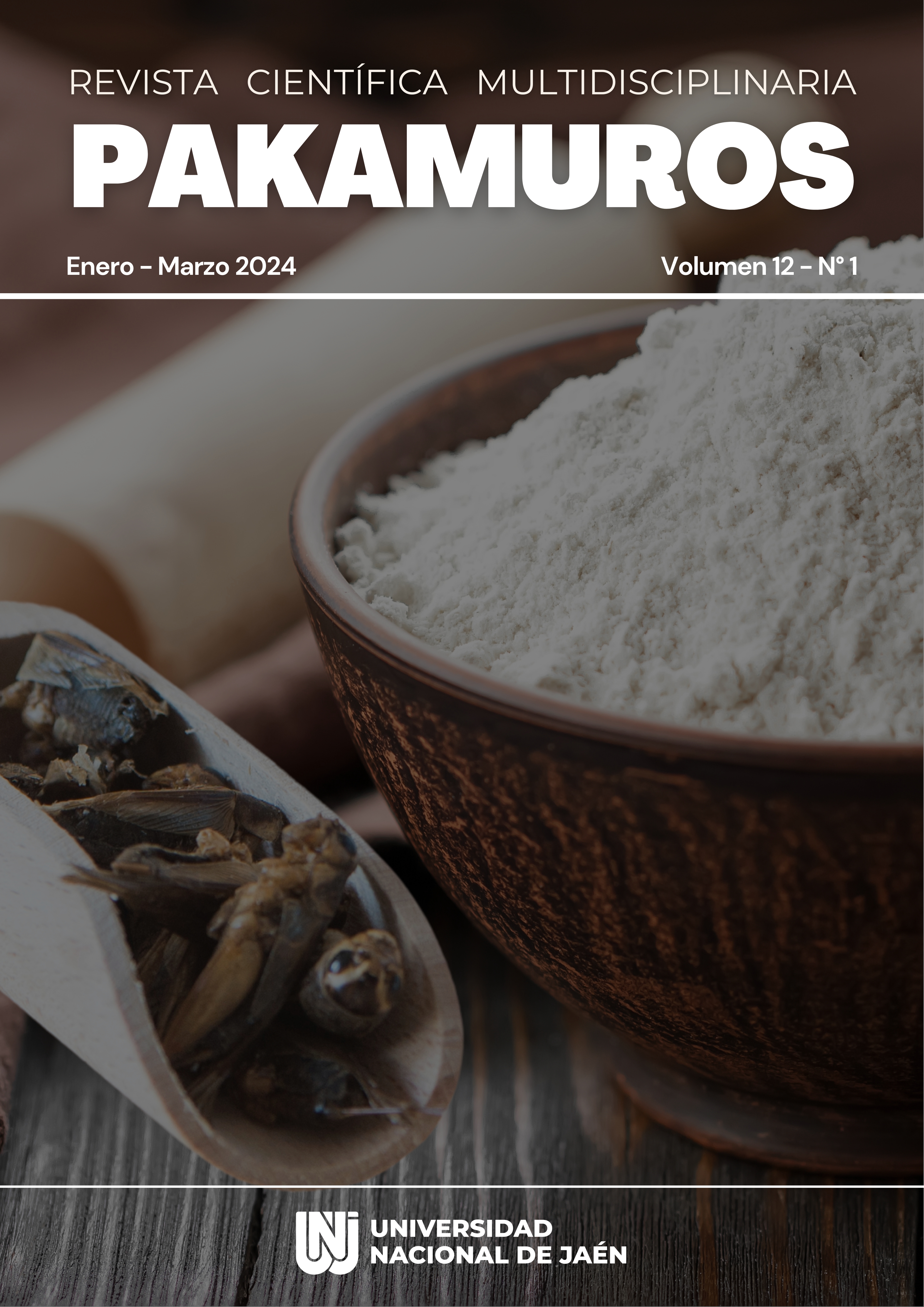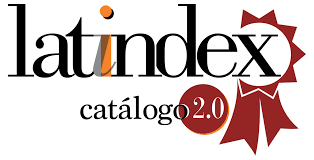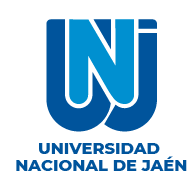Ozonated water and Food Industry: Antimicrobial evaluation in the disinfection of rainbow trout (Oncorhynchus mykiss) fillets.
DOI:
https://doi.org/10.37787/axs6bv41Keywords:
Microbiology, ozone, Oncorhynchus mykissAbstract
Hydrobiological products are highly perishable, which is why this research was carried out Hydrobiological products are highly perishable, which is why this research was carried out with the objective of evaluating the microbial load in the disinfection of rainbow trout (Oncorhynchus mykiss) fillets concerning Staphylococcus aureus, aerobic mesophiles, Salmonella sp. and Escherichia coli, submerging at different times (30, 60 and 90 s) and concentrations (0.5, 1.5 and 2.5 ppm). Microbiological analysis was performed on days 1, 8, 15, and 22 of refrigeration (4 °C), controlling pH according to AOAC 981.12 (1990). The experimental design was 3O x 3T factorial, with three replicates per treatment. R Project was used to perform ANOVA and Tukey's tests. The results revealed that treatment with ozonated water, especially using 2.5 ppm ozone and 30 seconds of immersion (O3T1), showed a significant antimicrobial effect against Staphylococcus aureus, maintained the levels of aerobic mesophiles below the minimum limit and prevented the development of Salmonella sp per 25 g of fillet and Escherichia coli per 10 g of fillet. In conclusion, the results demonstrate that the use of ozone plays a crucial role in both stabilizing pH and significantly decreasing the microbial loads examined.
References
Association of Official Analytical Chemists. (1990). Official Methods of Analysis (15.a ed.).
Cosemar Ozono. (2005). Tratamiento con ozono en cocedero de mejillón.
Dobeic, M. (2017). Ozone as a disinfectant in the food industry. En Scientific and professional section (4.a ed.).
Espinosa, M. (2015). Envasado, conservación y desarrollo de nuevos productos de dorada (Sparus aurata). Universidad de Murcia.
INACAL. (2019). Norma Técnica Peruana 041.001. Pescado fresco. Requisitos.
Karamah, E., Ilmiyah, A., y Ismanintyas, N. (2019). The application of ozonated water to maintain the quality of tuna meat: The effect of contact time, contact temperature and ozone dosage. IOP Conference Series: Materials Science and Engineering, 1, 11. https://doi.org/10.1088/1757-899X/509/1/012004
Medeiros, A., y Gonçalves, A. (2013). Potencialidade do uso de água ozonizada no processamento de peixes. Acta of Fisheries and Aquatic Resources, 2(1), 15-28. https://doi.org/10.2312/ActaFish.2014.2.1.15-28
Medeiros, A., y Gonçalves, A. (2016). Effect of aqueous ozone on microbial and physicochemical quality of Nile tilapia processing. Journal of Food Processing and Preservation, 7. https://doi.org/10.1111/jfpp.13298
Parra-Córdova, J., Acosta-Garcés, J., Escobar-Segovia, K., y Palacios-Ponce, S. (2020). Conservation process design of fresh fish using ozone as preservative agent (18.a ed.). https://doi.org/10.18687
Pérez-Calvo, M. (2019). Special case of ozone (physicochemical properties, onsite generation technology). Gases in Agro-food Processes, 65-74. https://doi.org/10.1016/B978-0-12-812465-9.00006-2
Periago, M., Santaella, M., Martínez-Graciá, C., Navarro-González, I., y Puche, C. (2017). Indicadores de calidad sanitaria y del deterioro en filetes de dorada (Spaurus Aurata) refrigerados sometidos a un tratamiento de agua ozonizada y sal de glicina. 58, 45-58.
Red de Seguridad Alimentaria Consejo Nacional de Investigaciones Científicas y Técnicas. (2020). Relevamiento de aspectos técnicos de pH y otros parámetros de calidad establecidos por Brasil para el ingreso de productos pesqueros congelados. Valores de referencia para merluza común (Merluccius hubbsi).
Sanjuás Rey, M. (2012). Aplicación de sistemas avanzados para la mejora de la calidad de productos marinos refrigerados de interés comercial. Universidad de Santiago de Compostela.
Sarooei, S. J., Abbasi, A., Shaghaghian, S., y Berizi, E. (2019). Effect of Ozone as a Disinfectant on Microbial Load and Chemical Quality of Raw Wheat Germ. Ozone: Science and Engineering, 41(6), 562-570. https://doi.org/10.1080/01919512.2019.1642181
Suárez, H., De Francisco, A., Beirão, L., Pardo, S., y Cortés, M. (2007). Pérdida de textura post mortem de la carne de pescado durante el almacenamiento en frío. Acta Biológica Colombiana, 12(1), 3-18.
Tantaleán, R. (2014). Proyecto de inversión para la instalación de una piscigranja de truchas en el Centro Poblado Menor El Campamento en la provincia de Chota, Cajamarca, Perú. Universidad Católica Santo Toribio de Mogrovejo.
Tomita, R., Furlan, E., Rodrigues, C., Lemos, M., y Moron, T. (2010). Utilização do ozônio como agente sanitizante no processamento do pescado. 15.
Top Ozono. (2021). Aplicación del ozono en la manipulación de pescado. https://topozono.com/aplicaciones-del-ozono/aplicacion-del-ozono-en-la-manipulacion-de-pescado-y-marisco/
Yousef, A., Kim, J.-G., y Dave, S. (1999). Application of ozone for enhancing the microbiological safety and quality of foods: A review. Journal of Food Protection, 62(9), 1071-1087. https://doi.org/10.4315/0362-028X-62.9.1071
Zhao, Y., Yang, X., Li, L., Hao, S., Wei, Y., Cen, J., y Lin, H. (2015). Chemical, microbiological, color and textural changes in nile tilapia (Oreochromis niloticus) fillets sterilized by ozonated water pretreatment during frozen storage. Journal of Food Processing and Preservation, 9. https://doi.org/10.1111/jfpp.12746
Published
Data Availability Statement
We declare under oath that we make the research data available to the public so that they can be accessed by readers.
Issue
Section
License
Copyright (c) 2024 Scientific Journal Pakamuros

This work is licensed under a Creative Commons Attribution-NonCommercial 4.0 International License.













